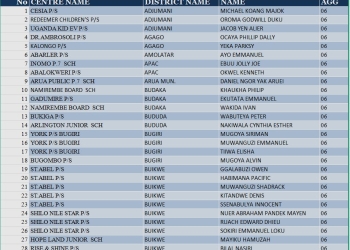
NAIROBI – Ugandan President Yoweri Museveni and Kenyan President William Ruto have acknowledged that trade restrictions among East African Community (EAC) member states are hindering the region’s economic progress.
In a joint press statement yesterday at State House Nairobi, the two leaders voiced concern over partners’ reluctance to fully open markets to one another, a practice they said perpetuates a cycle of barriers. Their discussions covered trade, security, and regional peace, occurring amid a surge in non-tariff barriers (NTBs) that suppress the region’s trade potential by nearly three times its capacity.
President Museveni urged the region to “wake up” and make “rational” decisions about trade and the economy. He highlighted Uganda’s landlocked status, along with South Sudan, Rwanda, Burundi, Central African Republic, Chad, and Ethiopia, questioning the effectiveness of leadership that doesn’t prioritize market access for goods and services.
“If you are not solving the issue of access to the market… how will you solve that?” Museveni posed at the press briefing. “Whoever is president, you will solve that. When you produce goods and services, the next question is who buys? If you don’t answer that and you are a leader…the future is very bleak. I am glad the region is waking up.”
President Ruto said their talks focused on “persistent Non-Tariff Barriers (NTBs) that hinder the flow of goods and frustrate the objectives of regional integration under the EAC framework.” While specific countries weren’t named, the meeting followed Tanzania’s move to ban foreigners from 15 “small business” economic activities and reintroduce an industrial levy on goods from partner states, moves condemned by the private sector.
Despite internal squabbles, including ongoing trade disputes between Kenya and Uganda over products like milk and poultry, Ruto affirmed the EAC’s role as a model for regional integration. “We emphasise the centrality of unity, economic convergence and shared prosperity as guiding principles for deeper integration,” he said.

According to the EAC secretariat, intratrade among members rose by 9.35% in 2024 to $15.2 billion (about Shs54.2 trillion), making up 12.17% of the total trade volume. However, experts from the East African Business Council suggest this could reach 60% if member states fully implemented common external tariffs and eliminated NTBs, potentially unlocking $63.4 billion (about Shs226.1 trillion) in regional trade.
The two presidents stressed the need for principled, practical, and timely resolution of these barriers, citing their direct impact on livelihoods, especially for farmers and small traders. A Joint Monitoring Committee (JMC) is scheduled for a mid-term review in October to address cross-border trade issues.
During Museveni’s visit, the leaders reaffirmed their commitment to strengthening regional institutions and advancing EAC objectives: the Customs Union, Common Market, Monetary Union, and ultimately, Political Federation. They also signed eight new agreements covering trade, energy, mining, tourism, agriculture, animal industry, fisheries, aquaculture, investment promotion, and transport. This includes an MoU for cooperation between the Kenya Bureau of Standards and the Uganda National Bureau of Standards to enhance scientific and technical capacity.
The leaders also reiterated their commitment to regional peace and stability, agreeing to close collaboration in conflict resolution efforts.
President Ruto announced a major industrial initiative: “Kenya and Uganda have agreed to establish the largest steel factory in the region. This joint project will reduce our reliance on steel imports and allow us to produce for export.” President Museveni reiterated his call for East Africa and the wider continent to consolidate markets and strengthen local production, drawing parallels with the United States’ prosperity through its large market. He also reaffirmed Uganda’s commitment to resolving the Migingo fishing issue.




















